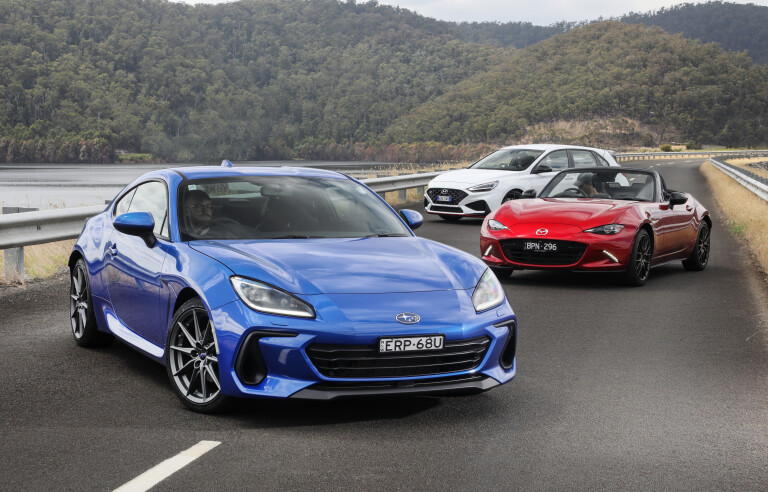
When something is good – like, really good – there’s the temptation to reinvent it. Musicians, dizzy from the success of an initial album, try to rekindle the fire with a follow-up record, only to have it fizzle. Michelin-starred chefs open second restaurants oddly bereft of the magic of the first. And in the world of politics, examples such as Kevin Rudd’s second term as PM are probably best left as dusty Wikipedia articles in a dark crevasse of the internet.
It’s the same with cars. Capturing a certain je ne sais quoi of an original hit is like trying to bottle a mood – and many have faltered. The new Toyota Supra is a prime example, having off-sided at least as many ‘fans’ as it’s won customers.
It’s fair to say with its first-generation 86 and BRZ, Toyota and Subaru socked it out of the ballpark in trying to recreate the fizz and soul of the original 1980s Toyota AE86 Sprinter. A love song to front-engine, rear-drive sports cars, the 86 and BRZ twins were greeted with more than a little adoration upon their launch in 2012, including, of course, a coveted Wheels Car of the Year gong.
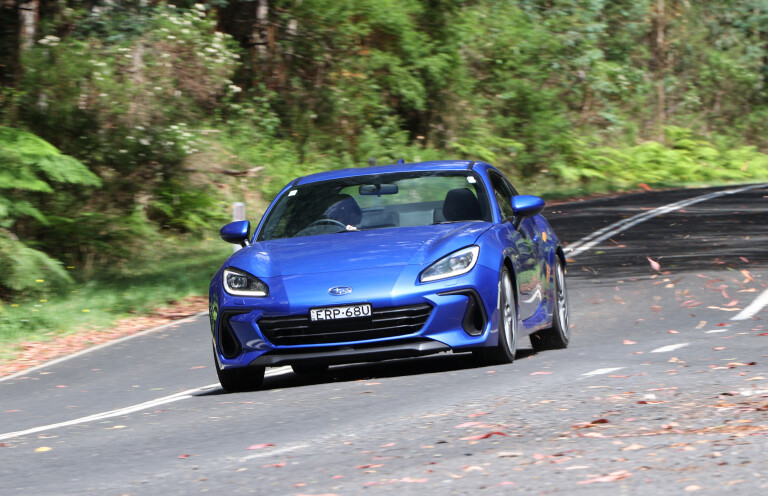
Luckily for us, both brands have attempted to modernise the original for 2022 with what is a ‘second generation’ car. With Toyota’s freshly renamed GR86 still some time away from Australia, today we’ve got our hands on the Subaru BRZ.
Both brands might tell you their cars are ‘all new’ but the reality is something more of a comprehensive facelift with an uprated engine and new interior. Importantly, Subaru has kept the low price of entry, with the equipment-packed S we have today a very reasonable $40,190 before on-roads.
The big news of course is a larger engine promising to light a proper fire under the BRZ’s chassis – namely, correcting a flaw of the previous 2.0-litre model, a mood-killing torque hole in the middle of the rev range. With a new engine block, bore has expanded by 8mm, yielding a handy 389cc rise in displacement.
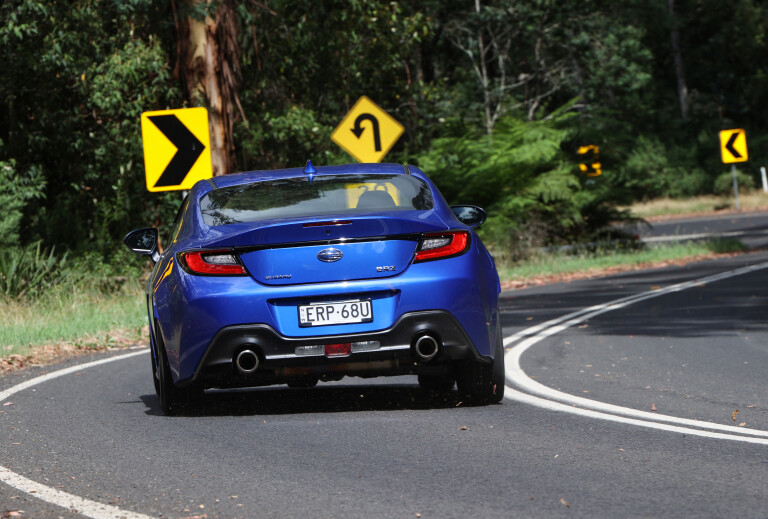
Power and torque increase by 22kW and 38Nm, with torque crucially now from 3700rpm, compared to 6400rpm previously. Within the BRZ’s new digital instrument cluster, you can bring up a little stylised power and torque graph.
The superseded model had this too, except its power and torque traces looked like two bits of spaghetti that had fallen over each other, haphazardly, on the floor. The new BRZ’s look a bit more hand-drawn and intentional, with the salivating promise of more muscularity.
But it will have to be good, it must be said, to keep ahead of razor-sharp rivals predating its sub-$50K territory. And that’s our objective for today: see how the new BRZ compares to two of the hottest other six-speed manual sports machines around this price. All three differ greatly in shape, size and intent, but promise the same thing – the ability to scratch the driving itch.
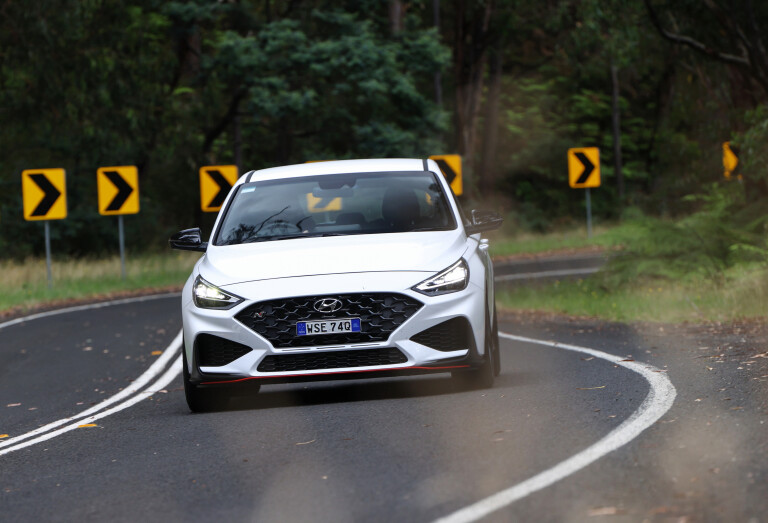
All three differ greatly in shape, size and intent, but promise the same thing:
the ability to scratch the driving itch
Fresh from something of a facelift itself, the Hyundai i30 N is the venerated hot hatch from Namyang – and one with a packed trophy cabinet, including many a comparison win in these pages. Under the bonnet a turbo 2.0-litre inline-4 dutifully torments the front tyres with its 206kW/392Nm, a tricky electromechanical limited slip differential ensuring equally distributed punishment.
While it obviously packs its performance punch into a practical five-door hatchback body, the rambunctious i30 N – riding on special 235/35R19 Pirelli P-Zero tyres – has a cheeky bent, and up a twisty road in the right hands, is seriously quick. Our test car is the non-Premium variant coming in at $44,500 before on-road costs.
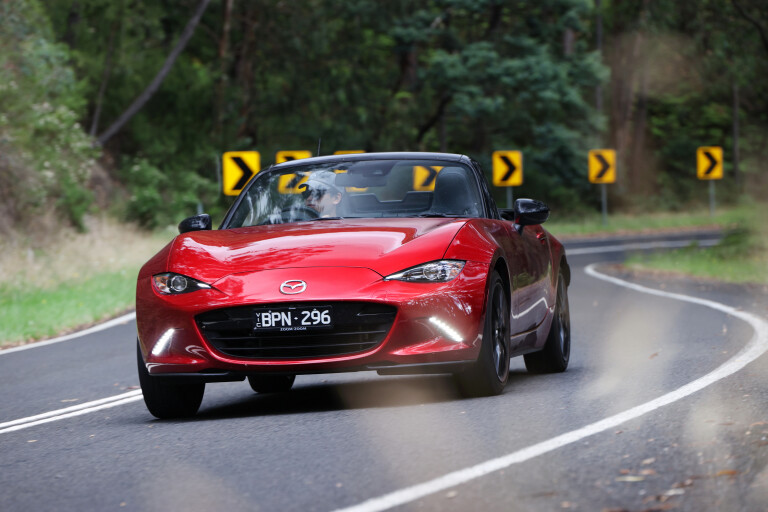
Posing a sunburn hazard to balding noggins the world over, in the red corner we have something very different again – Mazda’s much-loved MX-5, here in one of the tastiest guises since the ND was launched in 2015, the GT RS. While ‘GT RS’ brings up images, at least for this author, of big-winged and semi-slick-shod road racers from the likes of Stuttgart, the MX-5 GT RS gets Bilstein dampers, Brembo front brakes and cool, 17-inch BBS wheels.
In the plant room up front, a 2.0-litre naturally aspirated inline-4 produces 135kW and 205Nm, sent to the rear wheels only. The goodies come for a price, however, the GT RS setting you back a somewhat lofty $47,620 before on-road costs.
(Our test car is the just-superseded GT RS model, however the new one’s updates are incredibly minor.) It’s worth remembering this is a Car of the Year winner, too, taking top honours in 2016.
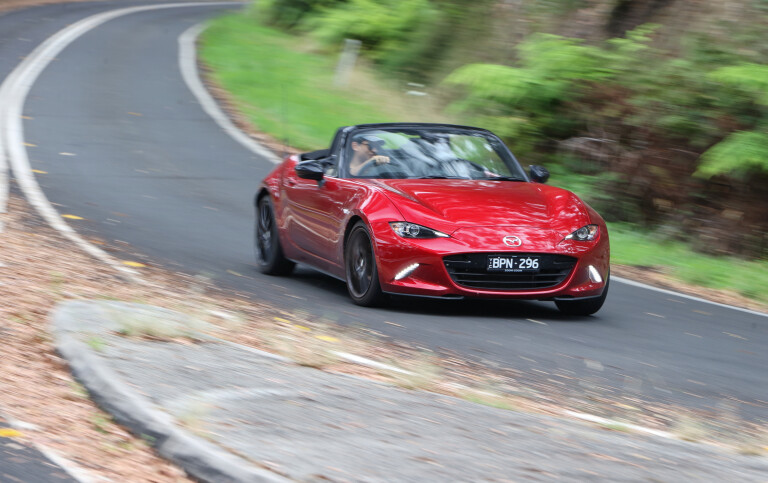
While the MX-5’s 135kW means it has the lowest power output of our three, its lithe 1052kg kerb weight gives it a power-to-weight ratio of 128kW/tonne which compares somewhat more favourably to the 140kW/tonne of the BRZ and 142kW/tonne of the i30 N (the previous BRZ was a flaccid 117kW/tonne). It’s reflected on the drag strip, too – which we’ll get to in a moment.
Our story starts, as ever, motoring through Melbourne’s meandering suburbia. The initial impression for all three cars is one of compromised comfort for performance, the MX-5 especially.
While the ride quality is good, there’s an abundance of road and wind noise with the roof up; and on the wrong kind of road, there’s no shortage of scuttle shake and drivetrain wobble, while some bumps almost ripple through the entire car. And don’t leave any groceries in the compact boot over a long drive, unless you want them a bit cooked.

Both the BRZ and i30 N deliver impressively for ride quality. In fact, while there is still an underlying harshness from the tyres, Hyundai has nailed the Comfort-mode damping to a lovely, long-stroke-feeling degree. The BRZ, too, feels to have changed philosophical suspension tack compared to the old model, being a lot softer in spring and damping, making it much less of a skateboard than the first-gen car.
Both BRZ and i30 N, however, let in an uncompromising and fatiguing amount of road noise, especially on a coarse-chip stretch. At times, in the BRZ, you wonder if they forgot to put in any sound deadening at all.
Energy levels lift, however, at the sight of a sunny Heathcote Park Raceway far north of Melbourne. Much has been made about the BRZ’s new higher power output but you’d be foolish to write-off an ND MX-5 at a set of lights. Emasculating a 30-something male in an EL XR8 is as easy as turning off the ESC (one quick prod of the button near your right knee, no need to hold it).
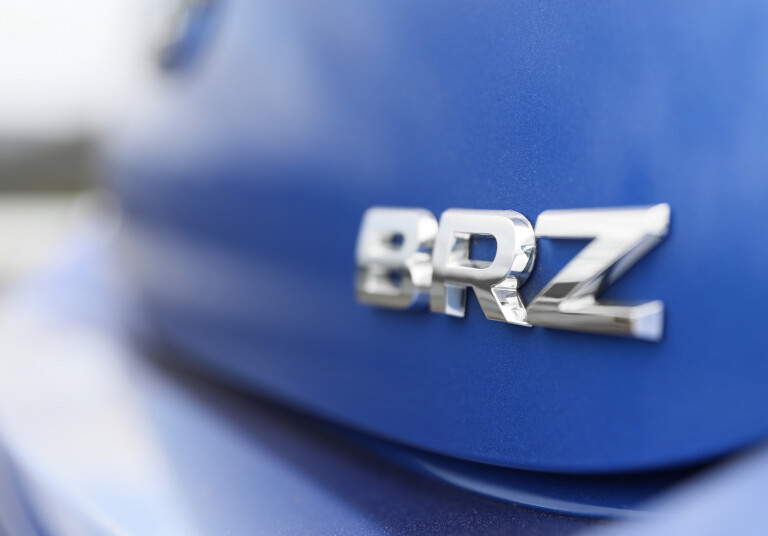
Grab first gear with the oily and mechanical, lovely gear lever, bring up about 5000rpm (just avoiding the 5500rpm soft limiter) on the revvy and racy four-cylinder, heard clearly in the cabin. Drop the clutch and wince through some painful axle-tramp and a dash that shakes so much it’s like it’s going to end up in your lap, and it’s as breezy as changing gears as quickly as you can, racing past the 7000rpm redline to just before a 7500rpm limiter.
By manual, rear-drive sports car standards it’s fairly repeatable and yields a best of 6.7 seconds to 100km/h on to a 14.7sec 400m at 151.2km/h.
The BRZ is somewhat more of a capricious affair. For starters, in its Track mode setting – which changes the digital tacho from an analogue dial to a bar graphic – it’s quite hard, humorously yet annoyingly, to see the exact revs which is somewhat crucial in this car. Variations of 4000rpm are needed with a tiny bit of clutch slip to avoid excessive wheelspin.
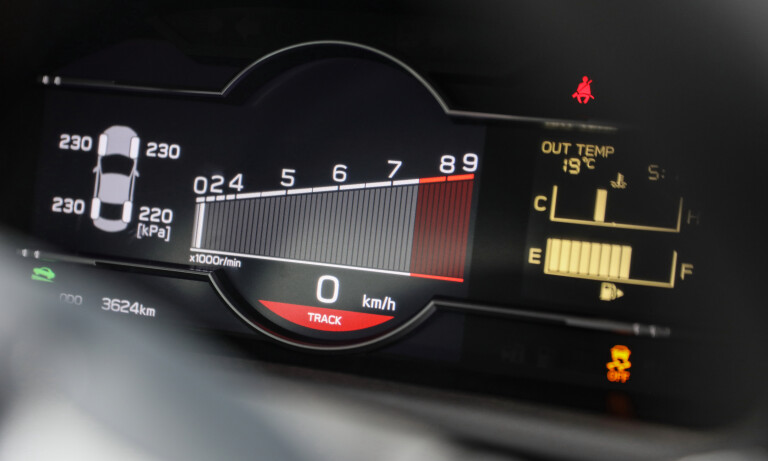
It’s a tricky car to launch, especially after the MX-5. The best we could get was 0-100km/h in 6.3sec and 0-400m in 14.3sec at 158.7km/h, however that easily bested past efforts with the outgoing BRZ tS (on a different surface) of 7.48sec and 15.37sec at 151.24km/h.
If you’re a Wednesday night drags kinda person, there’s no going past the turbocharged i30 N. While it does have launch control allowing revs to be set between 2500rpm and 5000rpm with a default of 3000rpm, in the six-speed manual at least, you’re better off just doing it yourself.
In its most aggressive drive modes it makes you feel like you’re sitting at the start of a World Rally stage getting counted down, a throaty and loud exhaust note emitting more than a few pops and bangs. To get the best times, the clutch is lightly slipped to minimise axle tramp and away you go.

We saw 0-100km/h in 5.9sec with a 0-400m of 13.9sec at a storming 166.6km/h. It’s worth noting the new dual-clutch auto is even faster – on this surface we’ve seen 5.3sec to 100km/h and 13.5sec at 171.8km/h over 400 metres. Seriously quick for a front-drive car.
The i30 N makes you feel like you’re sitting at the start of a World Rally stage, its throaty and loud exhaust emitting pops and bangs
It’s out on a twisty road – out the back of Broadford on the way back to Melbourne, in our case – the i30 N makes its mark again by simply being too potent for the other cars to catch. It starts with the drive modes of which there are 1944 possible combinations (how good is multiplication?) between Engine, Suspension, Steering, ESC, Active Exhaust, e-LSD and Rev Matching.
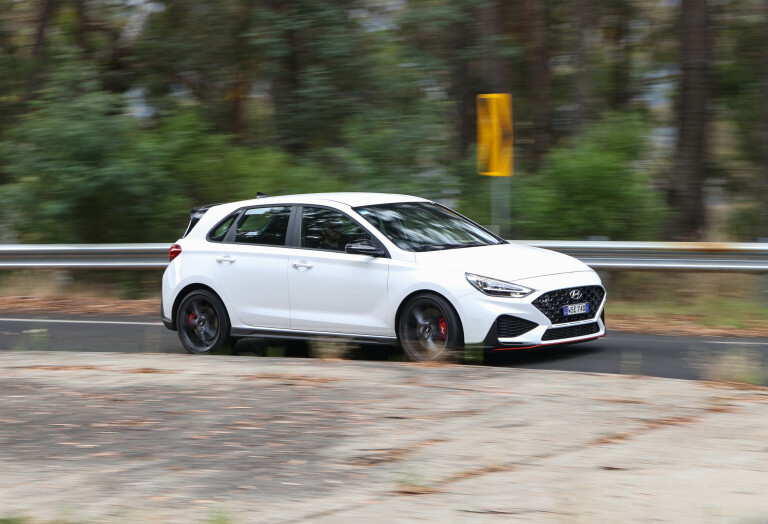
An ‘N Custom’ mode lets you instantly dial up your preferred combination of settings, but we found it was just easiest to stick with what makes the most sense – aggro engine, tightest diff, lightest steering, maximum exhaust and most aggressive ESC – with either Comfort or Sport dampers depending on your chosen road.
With plenty of power and initial grip, the i30 N invites you into a satisfying rhythm of picking up the throttle earlier and earlier, tapping that effective LSD, hanging on as the turbo comes on boost and fighting a bit of torque steer through the steering wheel. It’s exciting and a bit of a drug. The brakes are excellent, too, with great pedal feel.
While it’s very fun, the i30 N has more of an understeer bias and the harder you push on, the heavier, softer and more under-tyred it starts to feel, making it seem a bit happier at ‘nine tenths’. Beyond that it starts to wilt dynamically, gets a bit hot and flustered and to be sure, better rubber would help – the custom Pirellis, in our books, aren’t what they’re cracked up to be.
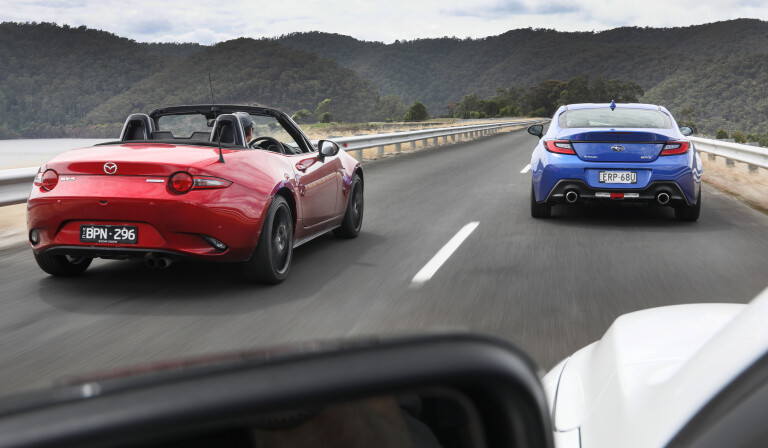
On the plus side, the rev-matching is appreciated and if someone said it had an aftermarket exhaust, you’d believe them. How the cracks, pops and crackles on the overrun – especially when the exhaust is hot – is legal, we will never know. It sounds awesome!
Drop the roof in the MX-5 – as easy as unlatching it from the top of the windscreen then folding it back and pressing it down until it clicks, all able to be done one-handed – and suddenly all the earlier compromises start to make sense. Our chosen test road couldn’t have flattered the MX-5 more, and once you get an ND MX-5 into its little ‘window’ it’s as good as driving comes.
All the controls are close to hand, and there aren’t any modes to speak of, at all. In a corner, while the i30 N is almost a hot-rod that you man-handle, the MX-5 is less forgiving and needs more of a delicate touch. Every input yields some sort of reaction, making it an involving and lively driving experience.

Even with the Bilstein dampers of the GT RS there’s still dive and bodyroll in abundance (yet never excessively so), but also squat, and ample throttle adjustability. The engine feels eager to rev, making heel-toeing a breeze, also helped by excellent brake pedal feel from the front Brembo calipers.
You turn-in on the brakes, keeping the weight over the nose, and feel the MX-5 lean into its outside front tyre – very much inviting corner-entry oversteer, if you dare – until you gently transition back to throttle and transfer weight rearward again.
The MX-5 feels deliciously light, responsive and compact. And while there’s no ‘Sport’ ESC, it’s so well calibrated in ‘On’ that it doesn’t need it. (You would be brave to turn it off, too, as there’s a bit of a wild side to the MX-5’s handling – rookies beware.)

While the MX-5 takes to power oversteer like a cat to a bath – it’s too soft and sensitive to be a drift machine –it couldn’t be more opposite in the BRZ. While the new car now wears stickier Michelin Pilot Sport 4s, few cars so easily and wantonly unstick their rear tyres when loaded up in, say, a tight second-gear corner. Wide-open roundabouts become exercises in self-restraint – lest the flattering BRZ tricks you into thinking you’re better than you actually are.
The extra poke has elevated the BRZ into a true love song to not just rear-wheel drive, but driving in general
Curiously, while the BRZ still has one of the best front-ends and electric steering systems in the business, the extra grip from those Michelins combine with the newly supple suspension for a degree of bodyroll that surprises – and somewhat changes the handling character of the car.

Almost like the MX-5, there is a degree of squat, roll and dive necessitating delicacy up a twisty road – and care, as this is quite a quick car. There’s a nervousness about the chassis,too, that reminds of flighty hot hatches wanting to attack every apex sideways – except the BRZ is driving the rear wheels, has a bit of grunt and a tight mechanical diff.
If you love driving, it doesn’t get any more tantalising than that.
While it’s almost a bit too soft now – Subaru may have done aftermarket suspension suppliers a favour – the chassis is so good it gives a genuine insight into what the best sports cars in the world are like to drive – except for $40K, not $400K. If Subaru and Toyota said it had outsourced chassis development to Ferrari or Porsche, you’d believe it.
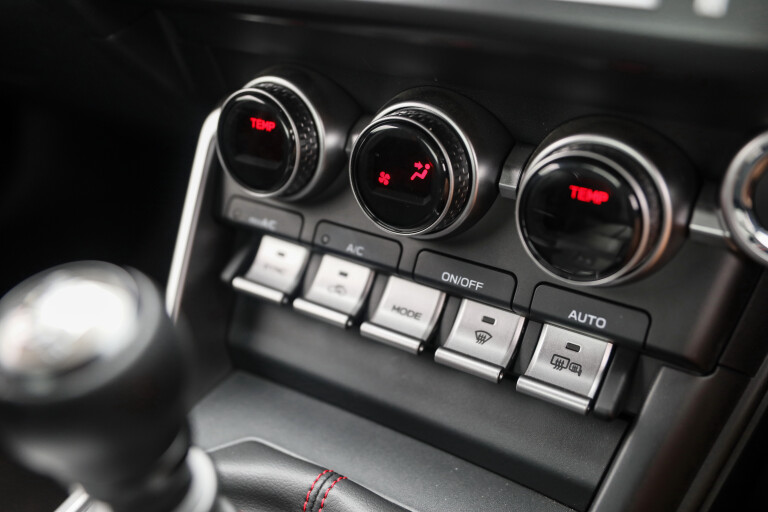
Which just makes it all the more a shame about the engine. Yes, Subaru has yielded more power and torque, which in turn has made it even easier to exploit that enchanting chassis.
You can now just leave it in third more often, instead of going back to second, which is appreciated (as the gear-change is merely good). The old ‘torque hole’ has also gone, the BRZ flexing more muscle at about 4500rpm that motivates it all the way to its 7500rpm redline. Praise be! It’s what the BRZ should have been back in 2012.
But for the extra urge, the engine and gearbox continue to be more things of function. The boxer-four is not particularly rev-happy and almost feels like it’s been hotted-up and installed in the BRZ against its will. All you need do, to understand the magic that’s missing from the BRZ’s powertrain, is thrash the MX-5 for about five minutes.
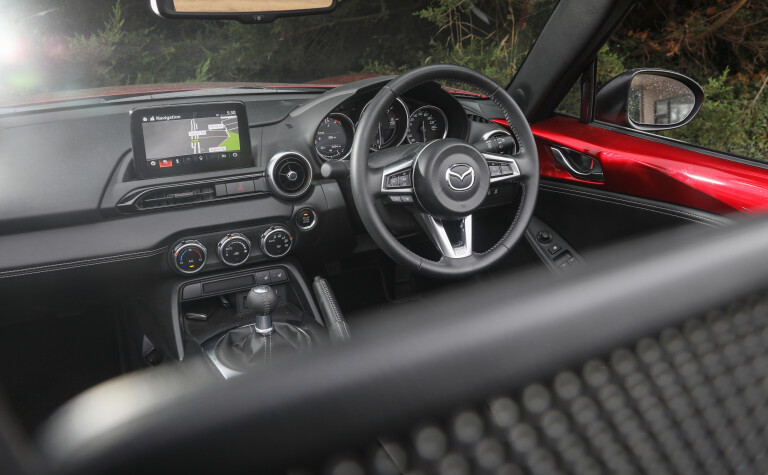
Perhaps we are being overly critical of the BRZ’s powertrain, but it’s only annoying because the chassis is so good; forget a turbo, the BRZ with the MX-5’s powertrain would be All Time.
Sound-wise, too, the BRZ gets the wooden spoon. While the MX-5 does a mean rendition of a Mazda3 engine, its fundamental rev-happiness redeems – as does something of an intake noise. Subaru, however, has ditched the old mechanical sound-augmenting pipe for a speaker in the dash producing a loud, aggressive, buzzy artificial intake noise.
Other road-testers have liked it, but to me it would be very easy for a game developer to imitate. The speaker can be disconnected fairly easily (the loom sits behind a bit of dash trim) but with its quiet exhaust, owners have complained they miss the loud noise even if it’s fake. Makes sense.
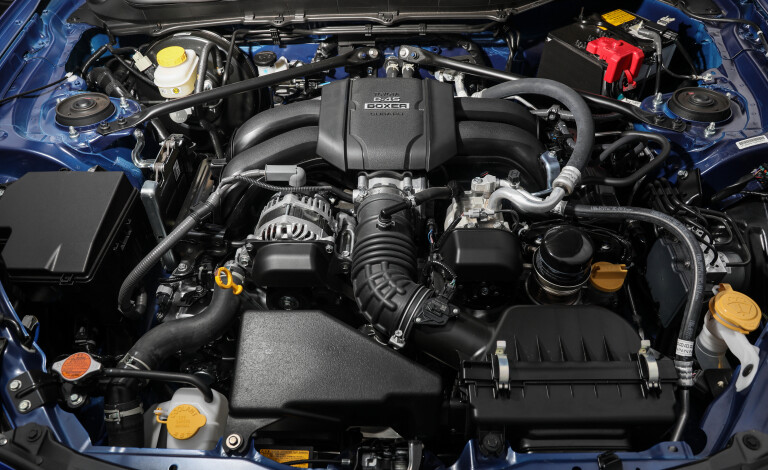
It’s not enough for the BRZ to lose this comparison, however. In the final reckoning, all three cars offer something very different – and in a sense it’s too individual to offer a definitive verdict.
The BRZ loses marks against the i30 N for practicality, pace and obviously technology – for modes, the BRZ has the aforementioned Track Mode that slackens the ESC, but that’s it – and it can’t quite reach the same levels of overall, top-down, sunny-day driving ecstasy of the MX-5 in its zone.
But it’s more fun more of the time, and the cost, in the MX-5’s case, is too much compromise. The i30 N also makes you pay a price it can’t avoid, in being more of a heavy, upright car.
The BRZ might still feel to be missing some X-factor in the engine department, but it’s certainly not grunt. While power is a thing you can truly never have too much of, the extra poke has elevated the BRZ into a true love song to not just rear-wheel drive but driving in general – an even better hit than the first, and one you’ll be playing on repeat.
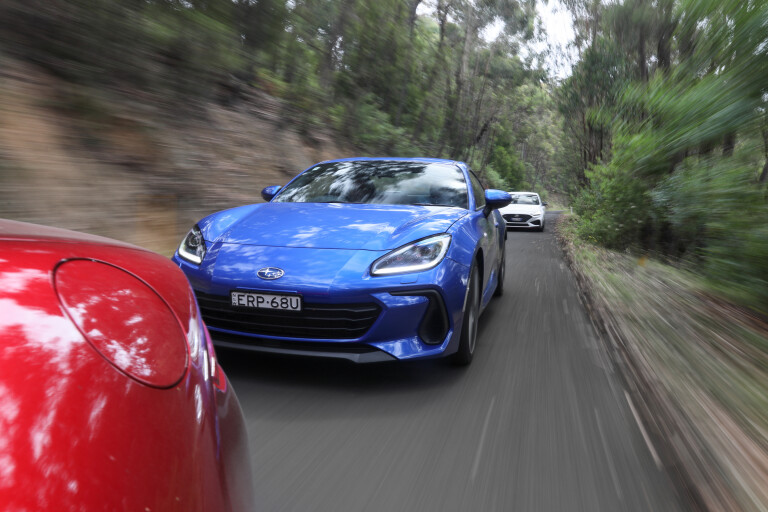
CLOSER LOOK
Hyundai i30 N
Obviously if you regularly need to carry more than one passenger, this story can end for you here: get the i30 N. Based on a five-door, run-of-the-mill hatchback obviously means usable rear seats and a reasonable-sized boot (don’t mind the strut brace stretching across it).
But also you’re greeted with a smartly laid out, ergonomic interior that couldn’t be easier to use on a daily basis. While some cabin materials feel a little downmarket, the bits that you do touch – the snug (cloth) sports seats; the leather steering wheel – are excellent and feel like a bit of a treat.
It’s just a shame the 50-litre fuel tank isn’t larger, as the i30 N, driven anything but the most sedately, has a talent for emptying it.

Subaru BRZ
The same could be said for the BRZ, its 50-litre tank offering a merely satisfactory 450km or so of realistic range. But Subaru has done an excellent job of updating the BRZ’s interior, the focus of which is a new 7-inch digital instrument display with a cool boxer-themed ‘opening ceremony’ graphic.
a new 8-inch touchscreen sits above smartly redesigned HVAC controls. Cabin ambience feels to have lifted slightly over the old model, thanks in part to nicer materials (even if it’s still nowhere near as luxe as something like a Golf GTI). You also sit 5mm lower than the old car for a true sports seating position.
That all said, more steering wheel reach/tilt adjustment would have been great. Also manual BRZs miss out on AEB and radar cruise – boo.

Mazda MX-5 GT RS
While the BRZ’s packaging is excellent (forgetting the rear ‘seats’ which are only suited to emergencies) the MX-5’s takes it to another level. It has an eery ability to swallow up even the tallest of occupants.
The interior itself is quite compact yet well laid-out (even if there’s no glovebox or door bins; instead a deep, lockable compartment on the rear ‘firewall’).
Exposed paintwork on top of the doors is a nice touch, as is the leather steering wheel and pride-of-place central analogue tacho. Annoyingly, the centre infotainment screen, despite being within easy reach, is only touch-operated when stopped, forcing you to use the dicky iDrive-esque hand controller. A digital speedometer wouldn’t go astray either.
SCORING
Subaru BRZ Coupe S: 8.5/10
Hyundai i30 N: 8.0/10
Mazda MX-5 GT RS: 8.0/10
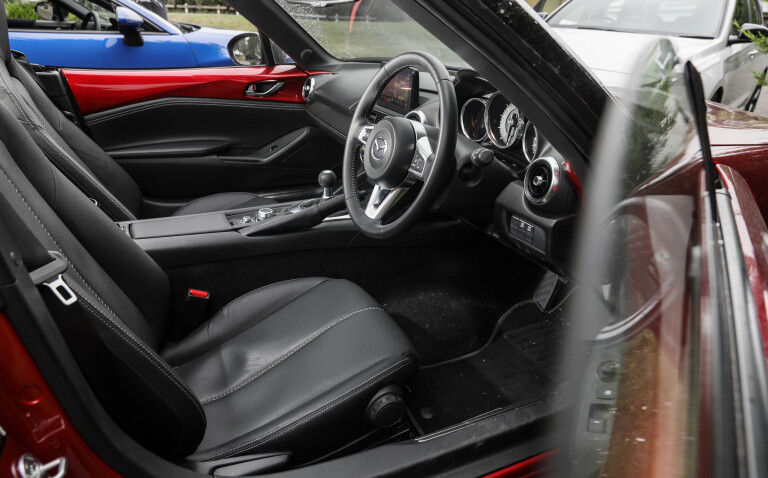
Consider... BRZ v OG WRX
How might a new BRZ fare in a race against the original WRX from the late ’90s? We flicked back to our March 1998 issue where a base Subaru Impreza WRX – lauded at the time for its cut-price, straight-line performance – blew into the weeds rivals such as the Honda Prelude VTi-R, Nissan 200SX and atmo Toyota MR2.
Its turbo 2.0-litre flat-four produced 155kW and 290Nm and had only a lithe 1255kg to fling down the road. With its rally-bred all-wheel drive, the launch procedure was a brutal, maximum-revs, clutch-dumping affair.
With tyre technology also in another era, the WRX went from 0-100km/h in a still-impressive 5.8sec on to a 14.2sec quarter mile at 147.6km/h. Enough to pip a new BRZ nearly 25 years later, but not by as much as you’d think.
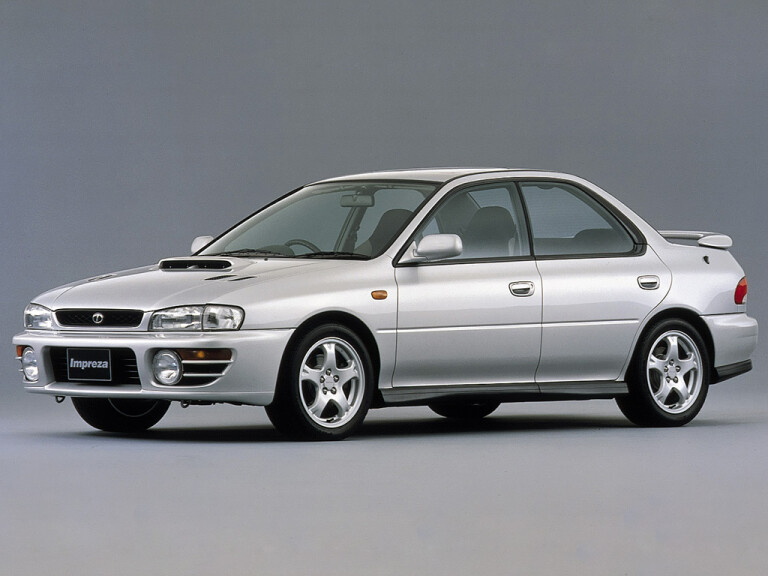
| Subaru BRZ Coupe S | Hyundai i30 N | Mazda MX-5 GT RS | |
|---|---|---|---|
| $40,190/as tested $40,190 | $44,500/as tested $44,500 | $47,620/as tested $47,809 | |
| DRIVETRAIN | |||
| Engine | flat 4cyl, dohc, 16v | 4cyl, dohc, 16v, turbo | 4cyl, dohc, 16v |
| Layout | front engine (north-south), RWD | front engine (east-west), FWD | front engine (north-south), RWD |
| Capacity | 2387cc | 1998cc | 1998cc |
| Power | 174kW @ 7000rpm | 206kW @ 6000rpm | 135kW @ 7000rpm |
| Torque | 250Nm @ 3700rpm | 392Nm @ 2100-4700rpm | 205Nm @ 4000rpm |
| Gearbox | six-speed manual | six-speed manual | six-speed manual |
| CHASSIS | |||
| Body | steel, 2 doors, 2+2 seats | steel, 5 doors, 5 seats | steel/aluminium, 2 doors, 2 seats |
| L/W/H/W–B | 4265/1775/1310/2575mm | 4340/1795/1445/2650mm | 3915/1735/1230/2310mm |
| Track (F/R) | 1520/1550mm | 1573/1564mm | 1495/1505mm |
| Weight | 1246kg | 1447kg | 1052kg |
| Boot | 201L | 381L | 130L |
| Fuel | 98RON/50 litres | 95RON/50 litres | 95RON/45 litres |
| Economy | 9.5L/100km (claimed, combined) | 8.5L/100km (claimed, combined) | 6.8L/100km (claimed, combined) |
| Suspension | Front: struts, A-arms, anti-roll bar Rear: A-arms, coil springs, anti-roll bar | Front: struts, A-arms, anti-roll bar, adaptive dampers Rear: multi-links, coil springs, anti-roll bar, adaptive dampers | Front: struts, A-arms, anti-roll bar Rear: multi-links, coil springs, anti-roll bar |
| Steering | electric rack-and-pinion | electric rack-and-pinion | electric rack-and-pinion |
| Front (F) | ventilated discs (294mm) | ventilated discs (360mm) | ventilated discs (280mm) |
| Rear (R) | ventilated discs (290mm) | ventilated discs (314mm) | ventilated discs (280mm) |
| Tyres | Michelin Pilot Sport 4 | Pirelli P-Zero (HN) | Bridgestone Potenza S001 |
| Tyre size | 215/40 R18 | 235/35 R19 | 205/45 R17 |
| SAFETY | |||
| ANCAP rating | TBC (not yet tested) | 5 stars (2017) | 5 stars (2016) |
| PERFORMANCE | |||
| 0-100km/h | Power-to-weight: 140kW per tonne | Power-to-weight: 142kW per tonne | Power-to-weight: 128kW per tonne |
| Redline/cut-out: 7500/7300rpm | Redline/cut-out: 6750/6750rpm | Redline/cut-out: 7200/7500rpm | |
| Speed indicated 100km/h: 99km/h | Speed indicated 100km/h: 96km/h | Speed indicated 100km/h: 98km/h | |
| Standing-start acceleration | Standing-start acceleration | Standing-start acceleration | |
| 0-20km/h: 0.6sec | 0-20km/h: 0.8sec | 0-20km/h: 0.7sec | |
| 0-40km/h: 1.7sec | 0-40km/h: 1.7sec | 0-40km/h: 1.7sec | |
| 0-60km/h: 3.2sec | 0-60km/h: 3.0sec | 0-60km/h: 3.1sec | |
| 0-80km/h: 4.5sec | 0-80km/h: 4.0sec | 0-80km/h: 4.7sec | |
| 0-100km/h: 6.3sec | 0-100km/h: 5.9sec | 0-100km/h: 6.7sec | |
| 0-120km/h: 8.7sec | 0-120km/h: 7.7sec | 0-120km/h: 9.3sec | |
| 0-140km/h: 11.4sec | 0-140km/h: 9.8sec | 0-140km/h: 12.5sec | |
| 0-160km/h: 14.7sec | 0-160km/h: 12.9sec | 0-160km/h: 16.6sec | |
| 0-400m: 14.3sec @ 158.7km/h | 0-400m: 13.9sec @ 166.6km/h | 0-400m: 14.7sec @ 151.2km/h | |
| Rolling acceleration | Rolling acceleration | Rolling acceleration | |
| 80-120m: n/a | 80-120m: 3.7sec | 80-120m: 4.6sec | |
| Braking distance | Braking distance | Braking distance | |
| 100-0km/h: 37.8m | 100-0km/h: 40.3m | 100-0km/h: 39.6m |

COMMENTS